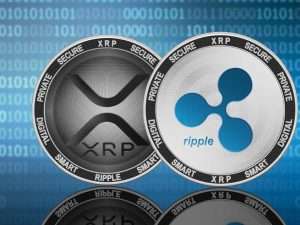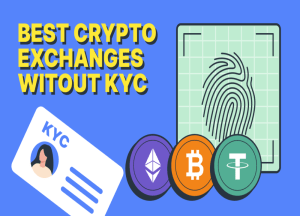Terra Classic (LUNC) Price Will Not Hit $1. Here’s Why
The price of LUNC has increased by nearly 171% in the past week on speculation that a burn tax of 1.2% will be applied to all transactions. However, it is possible that the most recent attempts to resurrect the doomed enterprise are nothing more than a sophisticated pump and dump.
Abstract:
- The 1.2% transaction tax burn mechanism is scheduled for implementation by Luna Classic.
- The native coin of the failing project, LUNC, has increased by 171 percent this week.
- New investors, nevertheless, shouldn’t get their hopes up too high about the coin.
Traders should take cautious not to get burned as the Terra Classic community prepares to burn additional LUNC.
The Comeback of Terra Classic
With the help of its loyal fanbase, Terra Classic is giving revival another shot.
Since May, when the UST stablecoin failed, many have believed Terra to be doomed. Do Kwon, the controversial CEO of Terraform Labs, wasted little time in launching a new Terra blockchain, rebranding the new chain’s native token as LUNA and calling his previous flop “Luna Classic.”
Rebuilding the original blockchain has been a long process since Terra’s sad demise. Despite Terraform Labs’ abandonment of the Terra Classic chain, there is still enthusiasm to develop it, as seen by a June proposal to begin burning a portion of the transaction fees and raise validator awards. A second proposal to immediately begin burning 1.2% of all tokens transferred also won support from the community, however implementation details were scant.
Throughout, commerce in LUNC, Terra Classic’s native currency, persisted. High volatility was to be expected, to some extent, given the lack of market liquidity. Even the small number of actively developing companies in the Terra Classic ecosystem was enough to generate rumors. The belief that LUNC, like many other crypto currencies currently trading at a fraction of a cent, might one day trade at a penny or, for the more ambitious (read: foolish), a $1, was widespread. The main apologists for LUNC ignored the reality that doing so would increase the company’s market cap into the trillions.
Let’s fast forward to the present day, where a suggestion by Terra community member Edward Kim has helped revive interest in Terra Classic. Kim’s idea suggests a feasible way to apply the 1.2% burn tax on all on-chain transactions. He discusses the potential benefits and drawbacks of such an update in a forum post on Terra Classic and opens the floor to feedback from the community. As a result, LUNC has reached a fresh all-time high in local trade, surpassing its previous high set before its May crash.
But what are the goals of destroying and taxing Luna Classic trades? How will the community impose the fee on interbank markets? These are just a few of the many important concerns that the Terra Classic community must answer in the run-up to an upcoming event that has the potential to create substantial instability.
Burning Tokens
Token burning is a simple concept. Price goes up when demand stays the same but supply drops. Incorporating a burn feature into their tokenomics is a common practice among the most successful and generally embraced crypto projects. The quarterly token burns that Binance’s BNB token perform, much to the delight of their holders, mirror the regular supply burns that the Shiba Inu project’s creators perform.
While this may be true in theory, in practice the burning of tokens often has minimal effect on the underlying supply and demand parameters. Most of the BNB that is burned originates from a stockpile that the exchange has been holding since the coin’s inception. Binance’s claim that it had burnt BNB worth millions of dollars makes for wonderful press, but such coins were never actually in circulation. Therefore, it shouldn’t come as a surprise that similar incidents have never caused BNB’s price to fluctuate much in the past.
What token burns do achieve, however, is the creation of a compelling story that can be understood and supported by even the most inexperienced crypto investor. It makes no difference if a token’s supply is reduced by a burn mechanism, driving increasing prices. In many cases, the price of a token can be artificially inflated by creating a false impression of scarcity in the market before a burn occurs.
The token burn tax that Luna Classic plans to implement is likely to serve no purpose other than providing a great story to attract naive investors. The majority of LUNC is traded on centralized exchanges like Binance, Kucoin, and Gate.io, rather than on the blockchain itself. So even if the Terra Classic community managed to impose a burn tax of 1.2% on all financial dealings, very little LUNC would actually be wasted. Many in the LUNC community have called on exchanges like Binance to adopt a burn tax, although this seems highly unlikely to happen.
Important holders and validators have been reaping the benefits of Terra Classic’s massive staking incentives ever since the network was re-enabled for staking earlier this year. Since the failure of the chain has caused fewer users to bother delegating their LUNC to validators, the average annualized return has increased to nearly 37%. Because of their early investment, these speculators are now stocked to the gills with stakes to sell to new investors who are betting that the imminent token burn would reduce the supply and drive Luna Classic to a dollar.
Even at its current fractional cent worth, there is little rationale for the high price paid for Luna Classic. Serious coders have little motive to begin working on the chain, and those already involved appear to be doing so more out of personal interest than out of any desire to make a profit. This doesn’t rule out the possibility of a future meteoric rise in LUNC’s price; however, it also doesn’t rule out the possibility of a precipitous fall should the people responsible for driving up the price suddenly decide to bail. Don’t be the one left holding the bag when the music stops, gamblers. This too shall pass.
Why trade crypto futures on BTCC?
- Largest variety of futures: Daily, weekly, quarterly&perpetual
- Flexible leverage from 10x to 150x
- Lowest trading fees 0.03%
- Industry-leading market liquidity
- Plenty of campaigns to win exciting rewards










